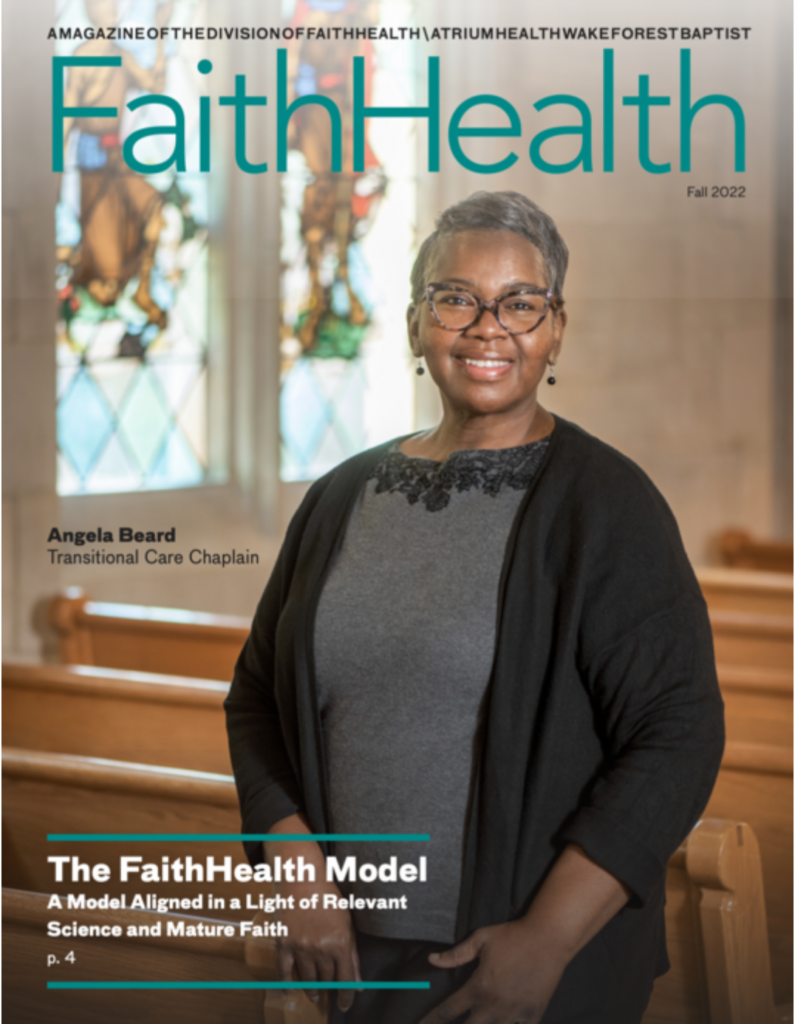By Gary Gunderson
Legendary football coach Knute Rockne of Notre Dame once said although his team prayed before every game, “I’ve found that prayers work best when you have big players.”
Medicine is filled with images of sports. We speak of battling cancer, fighting back against injury, showing courage to the last breath. We pray. And the prayers seem to work better when the home team is bigger and better prepared.
In sports, playing at home offers a big advantage; in football, statistically, it’s worth about a touchdown. In Seattle, you’ll see football jerseys everywhere with the number 12. Only 11 people play on the field; the 12 represents those cheering in the stands, the difference the home team makes.
The fourth miracle
Health care today has four streams of miracles. The first two, pills and surgery, get most of the attention (and money). The third, the revolution of imaging and genetic analysis, allows physicians to dramatically affect the odds of living well and long.
The fourth miracle — the social factor I call the home team — is the real frontier. This field is shaped by the “determinants” linked with pathologies. Long before we discovered germs, we noticed that bad housing, polluted water, dirty food and lack of sewage predicted ill health. Poverty, low education, dangerous work, violence and lack of legal protection are like poison. Surely social factors could protect, as well as threaten; strengthen, as well as weaken.
Only recently have we begun to think of the home team advantage in a new way. That even if we weren’t born with great genes, surrounded by high technology or have a strong family team, we can build a great team. That’s what programs such as FaithHealthNC are trying to do. The FaithHealthNC Supporters of Health, people such as Annika Archie, are reaching out to those in need in the communities they love. “They show that even if you’re not born onto such a team, it’s possible that a team will adopt you and be there for you with bonds tighter than those of blood,” says Fred Smith, one of our Division of FaithHealth advisors.
Weaving relationships
Most of us are not born with incredible home teams. Our families are small and scattered. We live in cities where we may not even know the people through the wall that share our plumbing. Our children may live in other time zones. For too many, when we need it most, our home team is a lonely fantasy.
But blood, race, neighborhood, age and faith are not lines that keep our team. Each can be ties that are smarter, wiser and more healing. Although the threads of relationship in our culture are scattered, we can weave new ones. And “we” does not mean we do it alone or for ourselves.
Author Wendy Lustbader observes that people with a history of generous exchanges with others tend to carry those expectations to the end of their lives. “The belief that there will be people around to assist us during our time of need is the conviction that we create by our own example. … We see firsthand that individual efforts can indeed reduce suffering and that not all hardships are beyond human control.”
FaithHealthNC is showing that we can weave relationships on a large scale. It’s often said that healing happens one person at a time, but actually the pattern is fractal, repeating itself at every scale. The pattern of trust that builds a bridge for healing starts with the individual then goes out to the first circle of family and friends. It then repeats at neighborhood scale and again at the level of the city and state.
Trust: the common thread
The common thread is trust. The energy for the weaving is compassion. At each level, trust is earned and tested and found strong enough for healing. Professional competence is only one factor in that kind of trust. Do providers know me enough to respect me, speak my language, care for my life and the things I value the most?
Just as individual medicine begins with the history, so does neighborhood or city health. We need an honest history about the pattern of social, economic and political choices that determined where the roads were put and through which neighborhoods, where the schools and clinics were and how well they were maintained, where the grocery stores are and how fresh their food is. We need to know who has what kind of jobs and how much they are paid. And whether you have reason to think the police officer or doctor is on your team or wants to go away entirely. This kind of history helps explain why people are wary, why they come too late for treatment, why they are quiet when the doctor gives them advice they can’t follow.
Having a home team advantage matters more than ever now that we know the most prevalent medical conditions — diabetes, for example — develop over many years and, once discovered, offer the prospect of a long period of managed care. The advantage today is we can still live well with these chronic conditions. The disadvantage is that our health care system is designed for short periods of highly technical treatment, not slow-moving conditions that depend on long-term relationships to manage.
Very few of us will die of injury, infection or violence. Nearly all of us will die of some slow-moving chronic condition. So for many, the promise of 21st-century medicine is one miracle short. What looks easy — relationships — is the hardest. Chronic conditions — often filled with pain and difficulty — are the long game and are faced by millions.
And the longer the game, the more having a bigger and better prepared home team matters.

